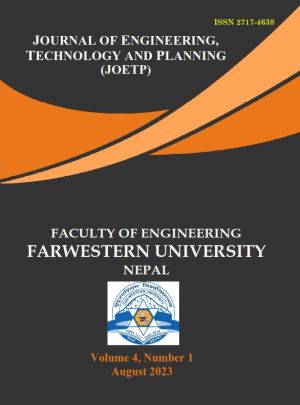Embarking on a Journey: A Comparative Study of Selecting Ideal Migration Destination among Nepalese and Indian Labor Migrants
DOI:
https://doi.org/10.3126/joetp.v4i1.58442Keywords:
Comparative study, Labour migration, Migration destination, Nepal and IndiaAbstract
Indian labour migrants come to Nepal in search of better opportunities and at the same time, larger size of Nepali labour migrants migrate to different cities of India. The objective of this study is focused to describe and compare the migration process of labour migrants between Nepal and India. With pragmatism paradigm of post-positivism, mixed methodology (QUAN-qual) has been implemented to explain the research questions, where quantitative is predominant methodology. Quantitative method included survey with a sample of 650 households and qualitative method included one focus group discussion with both migrants group and two key Informant Interviews (KII) having long experience and knowledge in Nepal-India migration. For this research, Bhimdatt Municipality of Kanchanpur district is selected for the study area. The study showed that about 30 percent people from Bhimdatt Municipality migrate to the capital city Delhi. Similarly, 16 percent to Karnataka, 11.4 percent to Punjab, 10.6 percent to Maharashtra, 7.2 percent to Uttarakhand, 6 percent to Haryana and others move to Gujarat, Himanchal Pradesh, Goa, Uttar Pradesh, Tamil Nadu, Madhya Pradesh, Andhra Pradesh and Rajasthan. This finding challenges Revenstein's theory of migration in which the distance between the origins determines the volume of migration between place of origin and destination i.e., higher the distance, lower the volume of migration and vice versa. The main source of information seems to be generated with relatives and friends (50.9%) for both the migrants. The movement of Nepali labour migrants is found to different big Indian cities with longer distance however Indian labour migrants to Nepal choose near distance as their destination. Near distance, open border and social relationship (network) are the main causes of selection of their particular destinations.
Downloads
Downloads
Published
How to Cite
Issue
Section
License
Copyright © Faculty of Engineering, Far Western University

